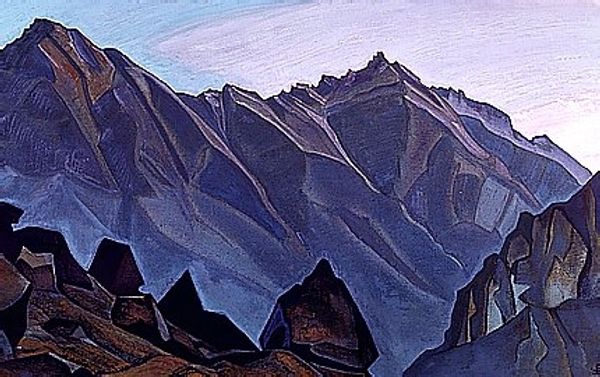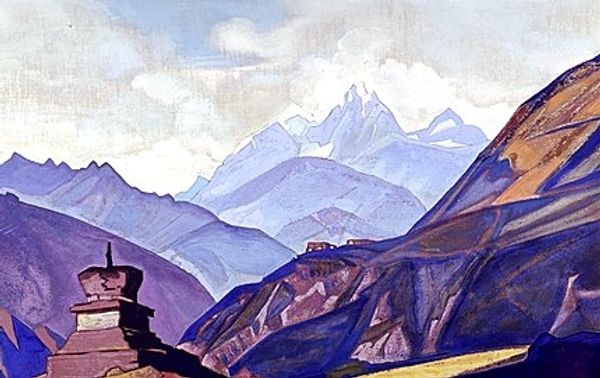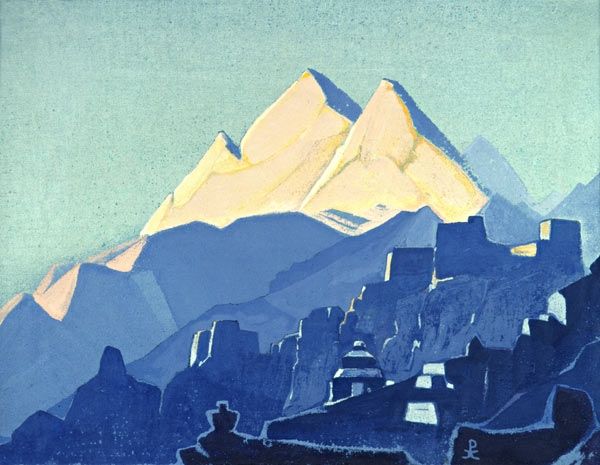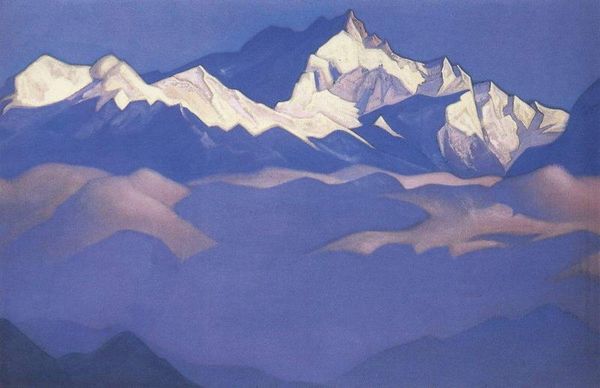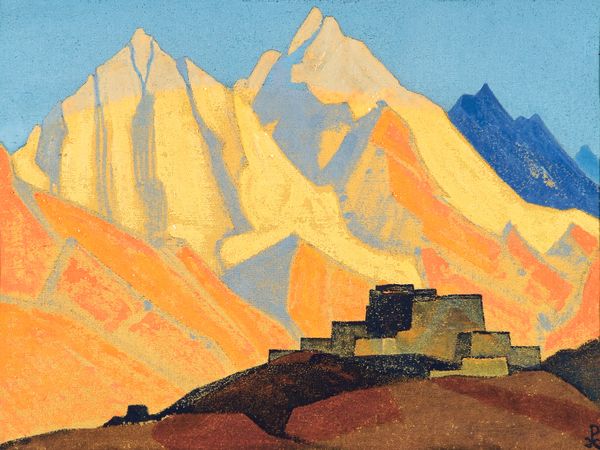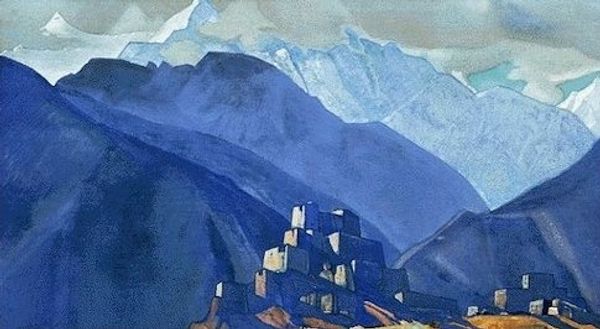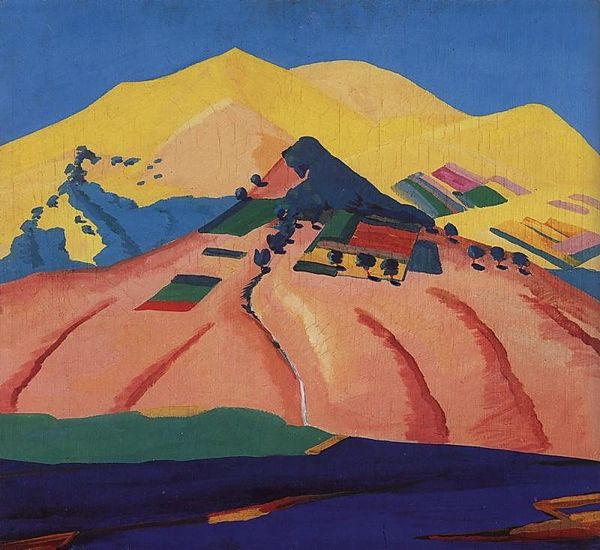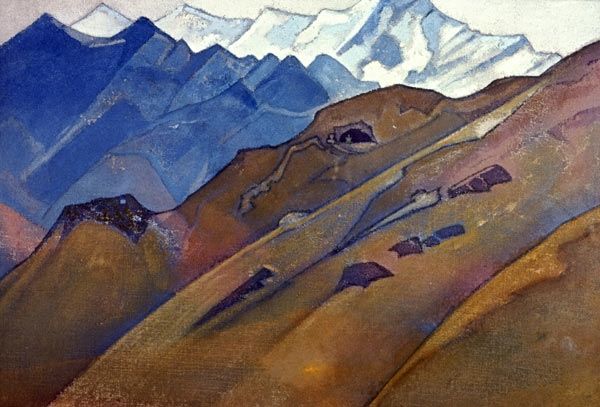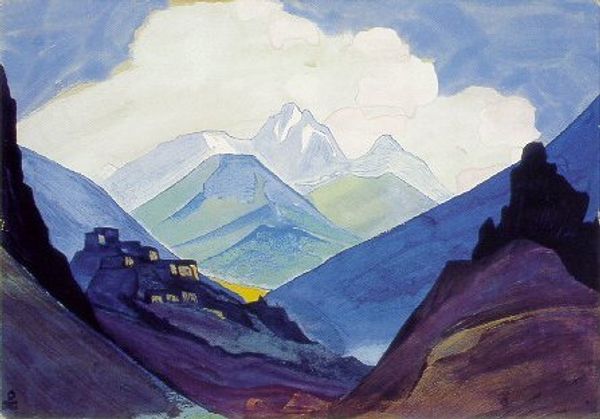
Copyright: Public domain
Editor: Here we have Nicholas Roerich’s 1933 oil painting, "Tibet. Flaming peak." I'm immediately struck by the contrast. The cool blues of the lower mountains really push the vibrant orange peaks into the foreground. It almost feels… spiritual? What do you see in this piece? Curator: Spiritual is the right word, I think! Roerich saw the Himalayas as this nexus of earthly and cosmic energies. Look at how the architectural forms seem to sprout directly from the rock. Are they dwellings or natural formations? He blurs that line beautifully, doesn't he? Editor: He does! The way the colors interact feels so intentional. The composition too – my eye is immediately drawn upward. What do you think he’s trying to say? Curator: Perhaps that simple devotion *is* architecture, or at least builds a pathway to the divine. He was deeply influenced by Theosophy, a belief system that sought to unite Eastern and Western spiritual traditions. It's like he's painting a visual mantra, each colour resonating with the soul. Does that resonate with you at all? Editor: It kind of does. The more I look, the less literal it feels, like I’m not really looking at mountains at all. I suppose I was seeing a literal mountain landscape but now it feels…like something else, something grander? Curator: Precisely! And maybe that "something else" is the whole point. He's using the physical landscape to evoke an internal one. Almost makes you want to climb those mountains, doesn’t it? Editor: Definitely makes you think about what it even means to “climb a mountain," metaphorically speaking. I never really thought about landscapes being about interiority so that’s been helpful. Curator: It’s paintings like this, for me, that whisper how art really *can* be a form of pilgrimage.
Comments
No comments
Be the first to comment and join the conversation on the ultimate creative platform.
